What will have a greater impact on the media world in the coming year? Ten things worthwhile remembering:
- A World Under a Regime Dictated by Health and Movement Restrictions Two years after first uncovered in China, the severe acute respiratory syndrome coronavirus 2, more commonly known as COVID-19, does not seem like someone who intends on leaving us anytime soon. At any given point in time, the "normal with an asterisk (*)" lifestyle we have adapted to can suddenly slip into its more extreme configuration; working and studying from home, an economy forced to slam on the brakes. As time goes on, the impact of these will become more and more entrenched among us. Fewer of us will be told to remain at home and avoid congregating with others – and more people of a new breed, who live in physical detachment from others. How do we talk to these people? How do we conduct PR with them? How do you motivate them to do deeds, and what are their actions in such a world? As life under restrictions continues, all of these questions will need to be answered.
- The Brand as a Home Increasingly it seems insufficient to speak about features, benefits, and technologies. It is not enough to advertise – "buy my products – they are really, really good!". The brand is a term that is increasingly being absorbed into new roles, including the production, creation, and distribution of content. In other words, the brand is the home of a "content universe" that reflects its values.
- Companies and brands seek value in traditional advertising and public relations and the more advanced methods described in the previous section. Not something glued, artificial, or in various shades of 'greenwashing' since this no longer works; in today's era, the bluff will be quickly exposed. They are really and sincerely seeking value in a manner that reliably conveys that they are driven by a desire to change the world for the better. What is otherwise known as; we will all profit from this.
- Alternative Investigative Reporting. That is, executed through systems funded by donations made by various movements or through crowdfunding. Their reporters are hungrier and less frightened. They are entering a vacuum created by old-school, institutionalized systems incapable of engaging in these issues as they are weakened economically and affected by the owners' interests.
- The Test of the Truth. The Coronavirus provides us the best, i.e., the worst example. No one nowadays can present us with an undisputed, scientifically proven truth: A professor after decades of virological research and behind him results in hundreds of studies on the subject – opposite a past, nearly forgoten entertainment talent seeking renewed attention and pontification on Twitter. Both carry the same weight. Same voice. Same persuasion potential. Is there a way here to apply some regulation? Or is the battle lost before we've begun, where we slip rapidly and painfully down a slope that leads to a new Middle Ages? How can the truth be rehabilitated? It is a billion-dollar challenge.
- The Rating Doesn't Always Determine The unfolding and growth of a "story" is not necessarily an outgrowth of power. A huge journalistic story, which will take over the public agenda, can also start with the tweet of an anonymous man or woman. It all derives from those who absorbed, picked it up, and took it forward.
- The Days of Deception Are Over. Everything can be checked, and all the facts are available. Primarily, every declaration or promise you have made is documented. Your every embarrassing moment had already became a screenshot. Any attempt by you to provide a trivial version or escape the unpleasant details – will be answered by an encounter with reality that is not always endearing.
- No Longer Silenced. The alternative media (i.e., social networks or content producers that are not from the mainstream media) is enabling a breakout of agendas once silenced by traditional media. It is a bottom-up process. Once excluded, agendas (for example, transgender people) find their voice, express it, and eventually receive mainstream legitimacy.
- There Is No World For Which Relevant Content Cannot Be Created. Every niche creates a community. Every community creates content. Anyone with a job, hobby or esoteric field of research becomes a micro-influencer. Even he or she will successfully draw tens of thousands of subscribers to their YouTube channel and develop a dialogue that connects people and create a sense of partnership for them.
- On the one hand, it is about data collection, and it can even be said an obsessive collection. A body that collects data, processes it, and produces insights using experts or artificial intelligence – will also know how to carve out policy, a narrative from these mountains of data, and most importantly, stories. Organizations like non-profits, for example, must adjust to a world where every Excel line is a potential headline. On the other hand, it is for all purposes a journalistic genre. Less mussing, more hard, backed-up facts. Data–based content also challenges, in a positive way, its creators. How should data be presented? How do we simply for each reader stacks of numbers and formulas? How does one package the by-products in a smart way from a graphical standpoint (e.g., while using cross media-print that the reader sends to the digital)?


